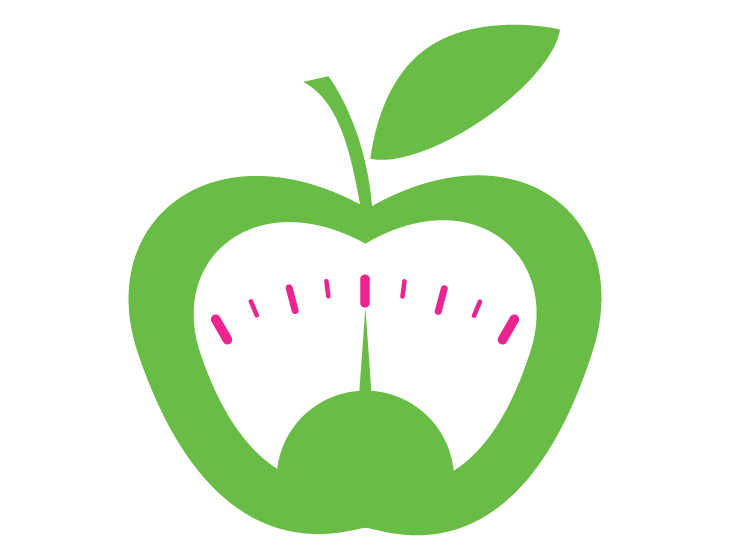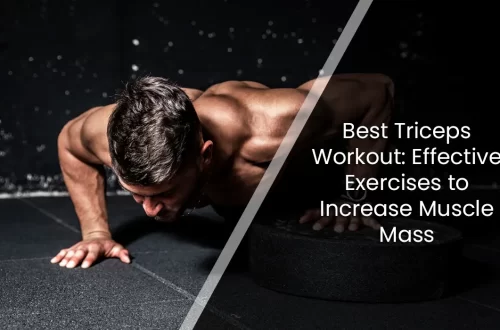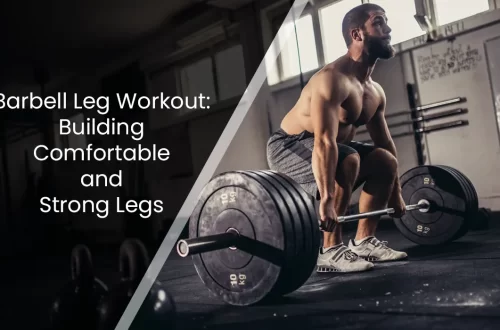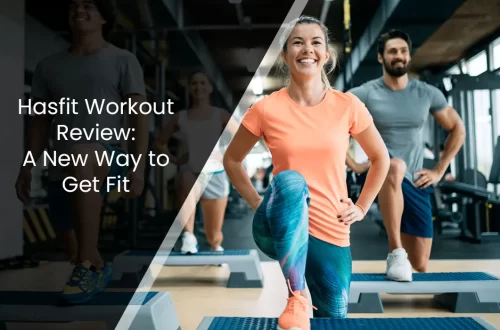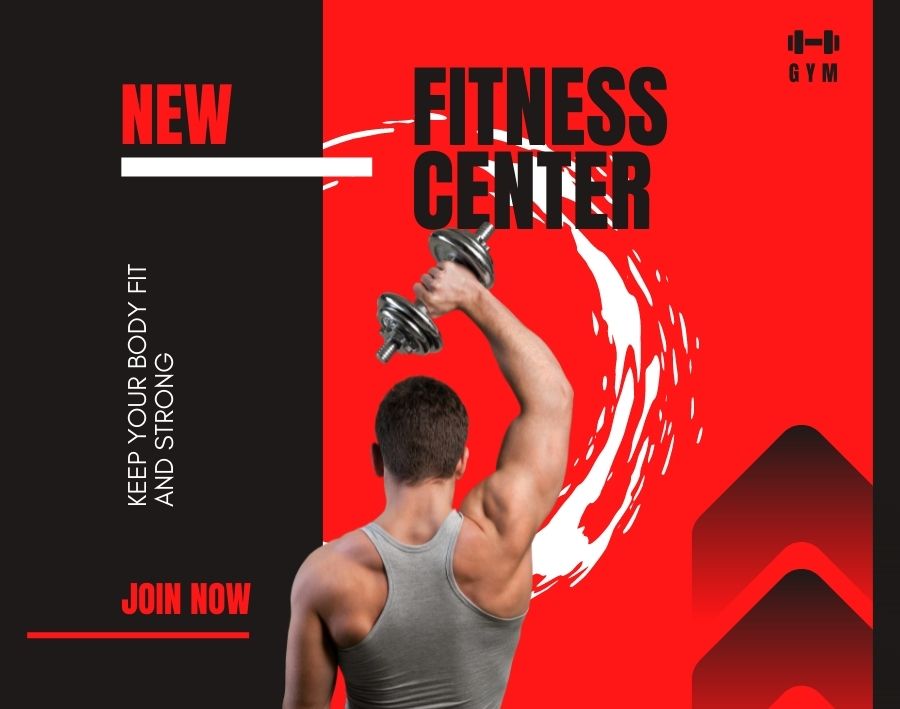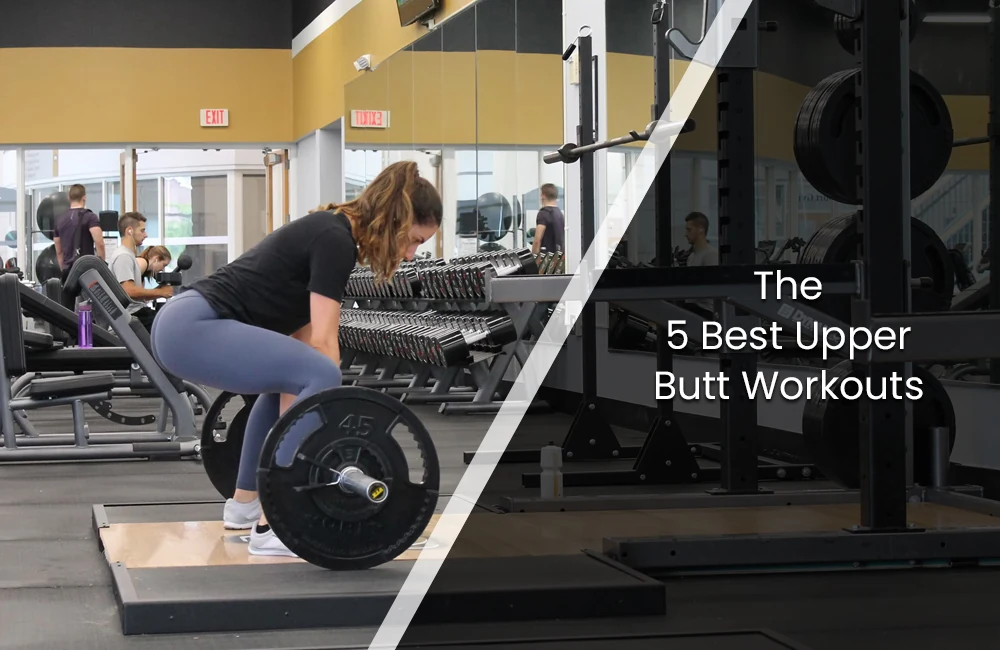
The 5 Best Upper Butt Workouts
Table of Contents
How often do you work your upper glutes while doing your favorite butt workouts?
As I have said before, the upper glute muscles are one of the most neglected muscle groups when it comes to butt workouts. The gluteus maximus and gluteus medius work together to pull the thigh and hip bone together and stabilize the hip joint. They also help to flex the hips, keep the knees straight, and pull the knees toward the midline of the body.
When you strengthen your upper glutes with a good upper thigh and butt workout you’ll notice a variety of benefits, not just in terms of how you feel, but also in terms of your athletic abilities. Because this important muscle is a strong stabilizer, you’ll reduce lower back pain, knee pain, and the risk of ankle sprains. You’ll also notice your running speed improve and that you can increase the resistance in your workouts.
Know More About Winstrol Online
Butt Muscles: What You Need to Know
Although the gluteus maximus, gluteus medius, and gluteus minimus appear to be one muscle, they are actually three separate muscles. These, like the core, help to stabilize the body, according to Perkins.
Your glute muscles have a variety of functions as well. The gluteus maximus, your largest glute muscle, fires heavily during hip extension, such as during the upward phase of a deadlift. You should include moves like the deadlift, squat, and glute bridge in your butt workouts if you want to primarily target the gluteus maximus.
Your hip abductor muscles are your glutes medius and minimus, which are the smaller butt muscles that make up your side butt. When you move from side to side, these muscles work in the frontal plane of movement. A lateral lunge or a monster walk are two examples of at-home butt exercises that work your hip abductor muscles hard.
Your glute muscles aid in hip extension, abduction, and rotation, which is why doing a variety of exercises rather than focusing on a single type of movement is beneficial. Unilateral moves, or one-sided exercises like step-ups or staggered-stance deadlifts, are also beneficial because they isolate each side. This can help you figure out if you’re weaker on one side than the other and work to correct the imbalance.
Another thing to remember about glutes: while good form and focus are important in any workout, they’re especially important when doing butt exercises. This is because, when your focus wanders, stronger muscles like your quads have a tendency to take over the work, according to Perkins. Worse, your lower back may attempt to take over the task, causing strain.
Mentally engage your glutes and pay attention to really fire up those three muscles. Before you begin a dedicated butt workout, you may want to spend some time warming up your butts. For example, this glute activation circuit is only four moves long, but it will ensure that the right glute muscles are firing.
See also Crutches Workout: Exercises and Stretches to Get You Back on Your Feet
5 Of The Best Upper Butt Lower Back Workouts
Whether you’re looking for a butt workout at home or at the gym, these butt exercises can be done anywhere. If you’ve been asking yourself: “is there a workout for my upper legs and butt”? The answer is yes — we describe them below.
Check them out, and try incorporating them into your butt workout regimen.
1. Glute Bridge
Glute bridges are best known for isolating the glutes, but be sure to do them slowly and deliberately to avoid relying on momentum.
These work both the upper and lower glutes at the same time, and the load does not travel axially through the spine. As a result, even someone who is new to training can quickly increase their load.
Lie down on your back, arms at your sides, knees bent, and feet flat on the floor hip-width apart. This is where you’ll begin.
Lift your hips a few inches off the floor, keeping a straight line from your shoulders to your knees, by squeezing and pushing through your heels. Keep your knees from collapsing by keeping the band taut while you hold this position.
Return to the starting position by slowly lowering your hips. This is a single rep.
2. Reverse Lunge
The balance required for this exercise necessitates a slower pace, which increases muscle recruitment by allowing the muscles to remain under tension longer. In my opinion, this is the best way to build glute strength.
Set yourself up in a comfortable, wide stance. Place your hands on your hips or clasp them together in front of your chest as shown. The starting position is here.
Take a 2 foot backward step with your right foot lifted, landing on the ball of your foot and keeping your heel off the floor. Hold this position for a few seconds before slowly returning to the starting position with your right knee bent and your left knee bent. To avoid an arched or rounded back, your torso should lean slightly forward. Your butt and core should be engaged while your left knee is above your left foot.
To return to the starting position, push through the heel of your left foot. That’s a single repetition.
Afterwards, switch legs and do the same number of repetitions on each side.
3. Donkey Kick
This exercise not only strengthens your glutes, but it also provides support for your lower back and activates a wide range of muscles.
Begin lowering yourself to the floor on all fours, wrists under shoulders, knees under hips, and core engaged.
Engage your glutes and Steroids for Sale hamstrings by kicking your right foot up and toward the ceiling.
Avoid tipping to the left and arching your low back by keeping your core engaged while lifting. Remember that this is a strength exercise, not a stretching one..
Execute each rep on one side, then switch sides.
See also Barbell Leg Workout: Building Comfortable and Strong Legs
4. Step-Up Knee Raises
To counteract the imbalances created doing this exercise, your glutes engage, helping you maintain your balance. As a bodyweight exercise, holding a weight in each hand can increase the intensity.
As you stand in front of a sturdy low box or step stool, or at the bottom of a staircase, clasp your hands together at hip-distance. To begin, put your left foot down on the step and take a step forward.
Bring your right knee all the way up to your rib cage.
Step with control back to your starting position with your left foot after returning your right foot to the floor. This is the entire set.
Read More About : Turinabol Before and After
5. Kickstand Deadlift
One-sided exercises like this one that target the gluteal muscles can be extremely beneficial, while also helping you improve your balance and stability at the same time.
Holding a dumbbell in each hand in front of your legs, stand with your feet together. Keep your right foot flat on the floor as you take a forward step with it. Here’s the one that’s doing the heavy lifting right now.
Use your left foot’s ball as a kickstand to get yourself up and moving. The starting position is here.
In order to bring your torso parallel to the floor, lower your weight by bending your hips and keeping a slight bend in your knees. Keep your shoulders back and your torso erect. Ideally, the weights should be just a few inches off the ground at this point in the movement. Going down that far may be difficult if your hamstrings are tight.
To get back to the starting position, keep your core tight and push through your right foot.
Squeeze your butt for a moment while you’re still there. That’s a single repetition.
Understand Real Deal of Anavar Price
Conclusion
These five exercises are just a handful of options to get you started with glute exercises. The important thing is to find a program that you can do regularly, and to keep working toward building strength, improving balance and stability, and making your butt as shapely as can be.
The best way to activate your upper butt muscles is to perform exercises that involve more than one muscle group, like the Standing Leg-Thrust, the Single-Leg Deadlift, and the Donkey Kick.
All of these exercises require you to maintain good posture and balance. This will ensure that you’re not activating your back muscles and creating pain in your lower back.
By focusing on these exercises and your overall workout routine, you’ll be able to reduce your risk of developing lower back pain and get an overall great-looking butt.
See also A Beginner’s Guide to Pre-Workouts: What You Need to Know

